The Google Nexus 9 Review
by Joshua Ho & Ryan Smith on February 4, 2015 8:00 AM EST- Posted in
- Tablets
- HTC
- Project Denver
- Android
- Mobile
- NVIDIA
- Nexus 9
- Lollipop
- Android 5.0
Software
With the Nexus 9, Google has released the biggest upgrade to Android since 4.0. In some ways, Android 5.0 represents one of the biggest shifts in the design of the OS ever. While we’ve had JIT compiling on Dalvik since Android 2.2, this has remained largely static for the past few years during Android’s monumental growth. With Android 5.0, we see the introduction of Android Runtime, or ART. Instead of trying to compile the application right before execution, ART does most of the compilation well before the application is launched. This incurs higher storage requirements, longer app-install times, and longer first-boot times, but with great benefits to performance. Google has done a great deal of work in general to try and resolve performance issues, as we first detailed in our coverage on ART.
While performance is one major aspect of Android 5.0, Google has also fundamentally redesigned the interface. To replace Holo, Google has introduced Material Design, which emphasizes depth, physics, animation, and a new palette of colors. While it would be great to go over all of these aspects of the Nexus 9, it’s best to refer to Brandon's review of Android 5.0 Lollipop for these issues. Instead, for this review I will mostly focus on the Lollipop experience specific to the Nexus 9. This means that the focus will be on performance of the device in general usage, along with the app ecosystem for Android tablets.
Unfortunately, these seem to be sore points of the Nexus 9 and the broader Android tablet ecosystem. Without question, if we’re talking about tablet applications they definitely do exist for the Nexus 9. The problem is that there is a pervasive lack of applications that are truly designed for a 9 inch, 4:3 aspect ratio display. Applications like Twitter, Facebook, and other first-party apps are simply blown up versions of the phone application. There is some level of extra content presented, but a lot of applications just don’t scale correctly which wastes a lot of real estate on the display. While we found issue with the Nexus 6’s lack of phablet-specific layouts, this is an even bigger issue on the Nexus 9.
While it’s possible to point fingers at app developers for not supporting Android properly, Google seems to have these problems as well. The settings interface is a single large pane of options, instead of a dual-pane interface that allows for simultaneous navigation of the overall settings and individual settings. The Play Store application is mostly similar in this respect, and the YouTube app is possibly the worst example of these kinds of issues. For example, while there is a tablet-specific video view in landscape, most navigation, search, and video selection is identical to what we see on a smartphone.
Nothing really takes advantage of the screen size other than simply being bigger than before. There aren’t any multi-window modes that exploit the larger screen size, and in general the Nexus 9 doesn’t introduce any new functionality that clearly justifies the need for a bag/backpack to carry it. There are applications that take advantage of the larger display, but these are rare. For the most part though, this is effectively true for most tablets other than the Surface Pro 3 which is effectively in a different category altogether.
On the performance side, the story is better but it isn’t perfect either. Similar to Brandon’s experience with the Nexus 6, I often saw random stutters on animations such as the app drawer or while opening an application. It’s hard to say what the cause is at this point, as the Nexus 6 seems to have similar issues with lag even though the Nexus 5 has none of these issues. One might point to FDE causing worse performance, but even that isn’t quite accurate as a build of Lollipop with FDE disabled didn’t do all that much in the way of solving these problems. Overall though, the experience is somehow less performant than the SHIELD Tablet on Android 5.0, even if these issues mostly present themselves in the form of minor frame drops from time to time. I also noticed that there was a distinct lack of available memory over time, which suggests a memory leak as on reboot launcher redraws effectively disappeared.
While these are significant issues that need to be resolved, the experience isn’t actually as bad as it seems. For what it’s worth, Material Design is a great new design scheme to replace the somewhat dated Holo UI that has been in use since Honeycomb/Android 3.0. While there are issues with the tablet experience, if one is willing to look past these issues they will find that the Nexus 9 is a respectable software experience. There’s also the potential for the Nexus 9 to spur improved tablet experiences, although this would be a slow change that could take years to be meaningful.


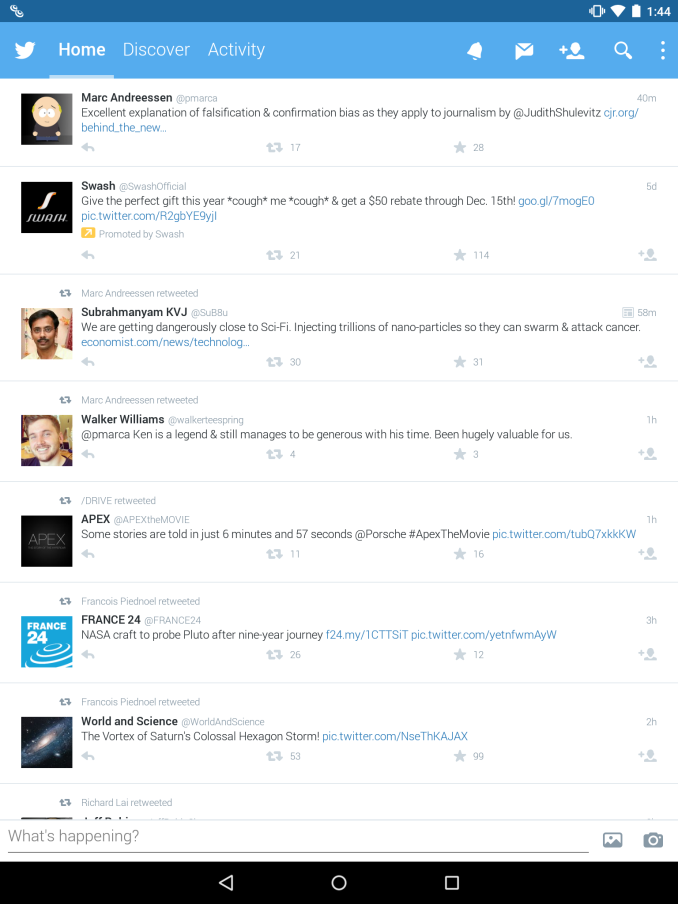
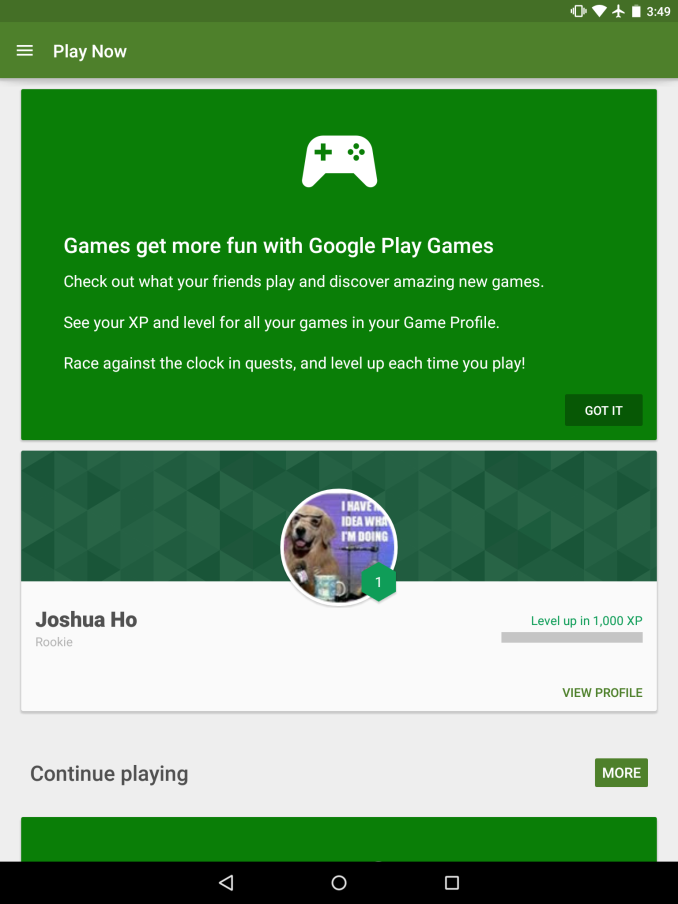
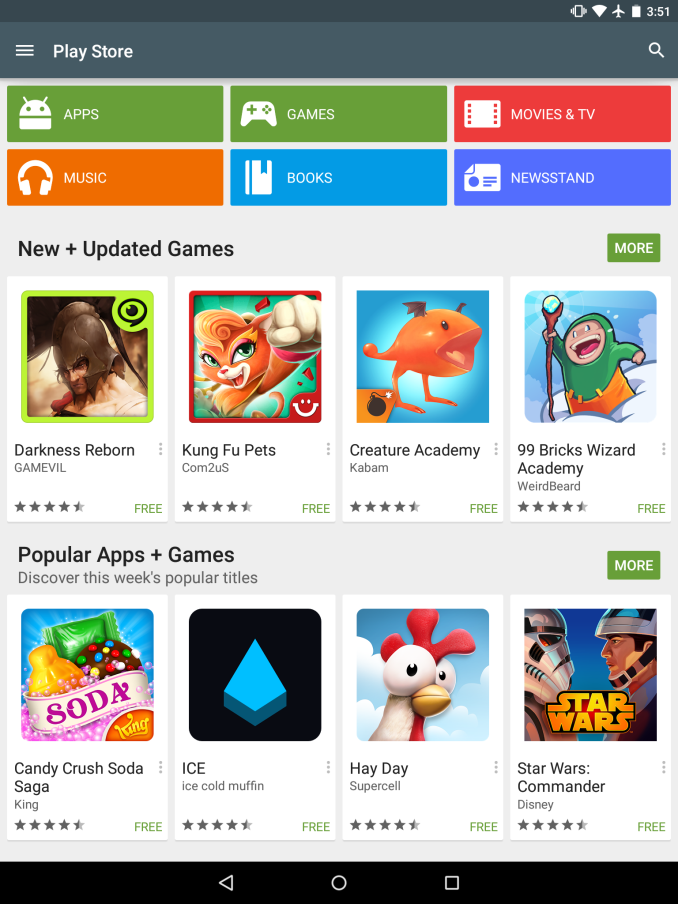
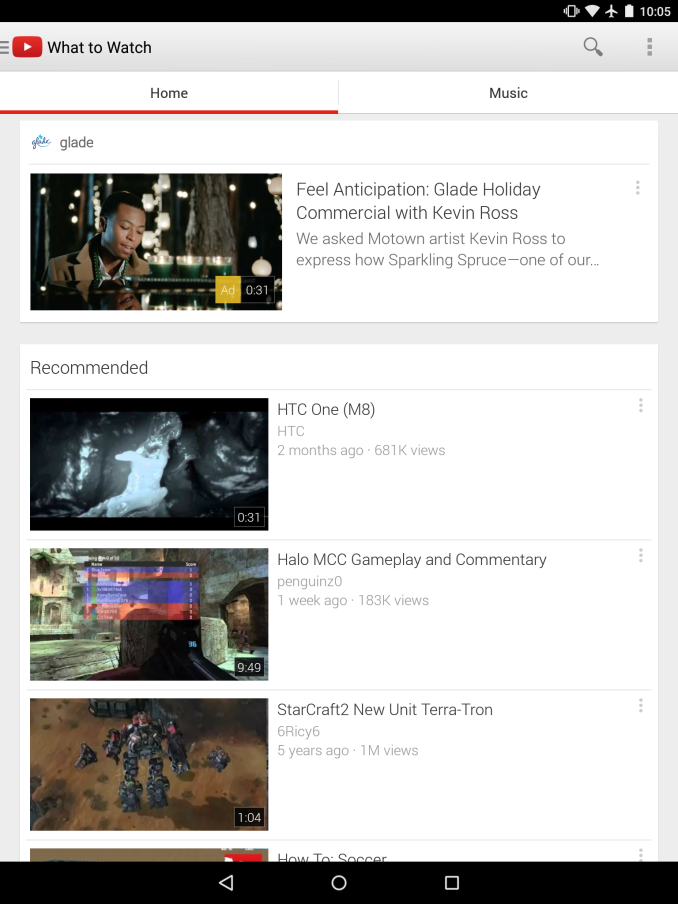
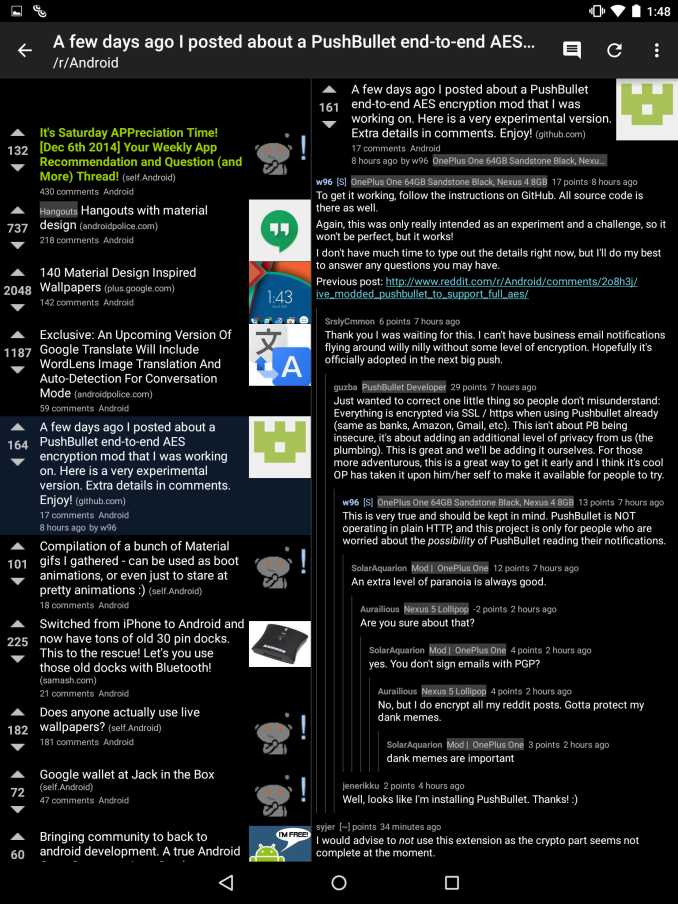








169 Comments
View All Comments
coburn_c - Wednesday, February 4, 2015 - link
High end my rear end. HTC has made high end tablets, HTC makes high end devices, Google makes high end companies make garbage. Seriously. Google devices are done.rpmrush - Wednesday, February 4, 2015 - link
On the cover page it has a tag in the top right saying, "HTX Nexus #2". Should be HTC?cknobman - Wednesday, February 4, 2015 - link
So regardless of how nice the hardware it Android (and more importantly most of its apps) still have major issues when it comes to tablets.Why waste time buying this stuff when you can get a Windows 8 tablet?
I get the best of both tablet and PC worlds in one device without being held hostage by lord overseer Apple dictating my every move or Androids crappy support and busted app ecosystem.
milkod2001 - Wednesday, February 4, 2015 - link
@cknobmanthere's no Windows 8 tablet out there for the same price,with same quality screen and snappiness as this one or Apple tablets. The closest would be Surface3 but it's much more expensive.
If you happen to know about any please post some links please.
rkhighlight - Wednesday, February 4, 2015 - link
Because a Windows 8 tablet is worse than a tablet when it comes to tablet user experience and worse than a notebook when it comes to notebook experience. Most people like to have two separate devices rather than owning a product that tries to combine everything. For some people this works but the majority prefers two product.milkod2001 - Wednesday, February 4, 2015 - link
not necessarily if done right. Lenovo Yoga comes probably the closest with its hybrid(tablet +notebook). It need to be much cheaper if it wants to be acquired by majority though.melgross - Wednesday, February 4, 2015 - link
The Yoga got terrible reviews everywhere. It's hardly recommended.Midwayman - Wednesday, February 4, 2015 - link
I don't think that's true at all. Most people would probably prefer to only pay for one device. The issue is one more of execution than concept. If the surface pro 3 were as light, thin, and as good on battery as high end tablets I certainly would have bought one. At a premium even.Impulses - Wednesday, February 4, 2015 - link
It that were true MS wouldn't be able to keep Surface on the shelves and the market for x86 Atom hybrids at <$500 would be comprised of more than a handful of OEM & models...I think for a certain class of individuals it makes all the sense in the world; students, business travelers, etc. For most people however it's just a compromise on both form factors and not really much of a money saver (specially when you factor the upgrade cycle into the equation).
steven75 - Thursday, February 5, 2015 - link
I have a Windows 8.1 tablet (not RT). It's the worst tablet interface I've used yet. A total bomb. And the touch apps and selection are universally awful.If it didn't have "classic" Windows desktop, I'd have sent it back to the store.